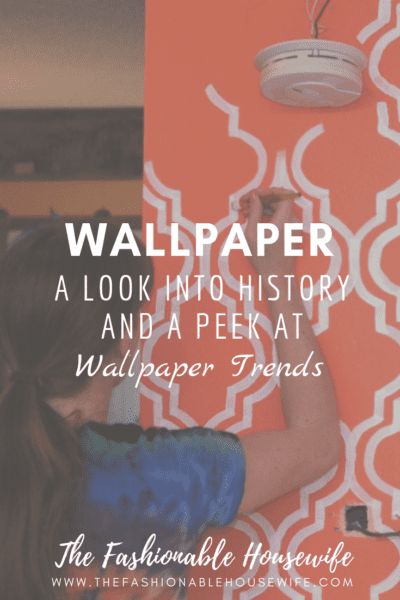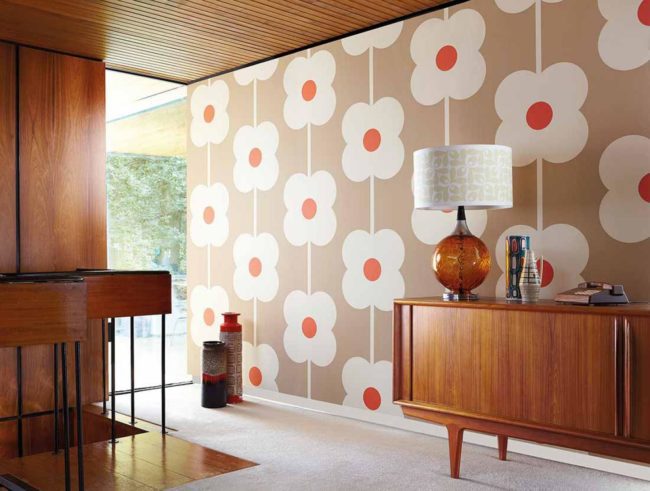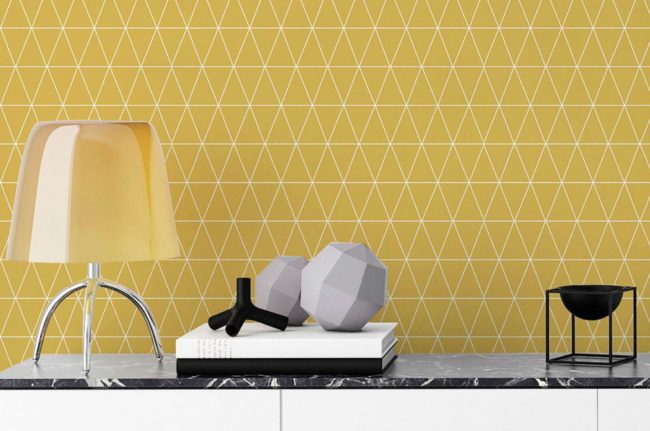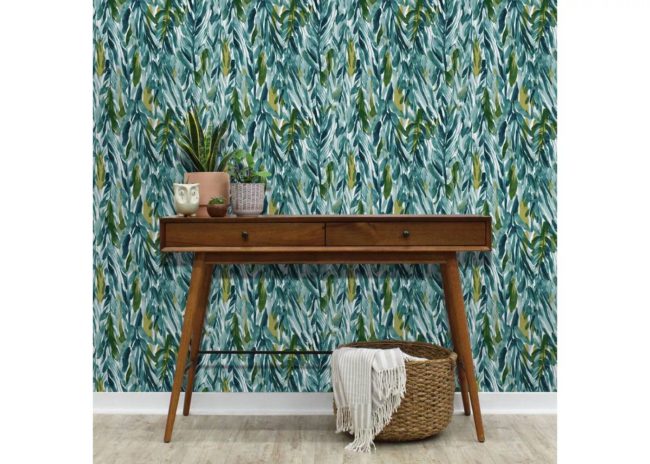
What comes to mind when we hear the word “wallpaper”? Often our memory goes back in time, to the golden era of wall coverings. Pastel colors, geometric shapes, an old turntable, velvet cushions, and an unmistakable 70’s style. An environment full of a vintage atmosphere that makes us want to take a dip in the past.
The 70s vintage style is characterized by the use of very strong colors. Bright green, turquoise and golden yellow define the tone, while more understated hues, like black and white, are only seldom utilized. The wallpapers define the color code of the environment, furniture and accessories complement them and they are chosen for their material qualities: glossy, glass and leather but also metal and wood. Design in 1970 used plastic materials and a copious amount of furniture, creating a playful atmosphere that brought joy and radiated sunshine.

Vintage wallpapers are definitely back in fashion when it comes to home decor, creating a huge market for antique furniture as well. Memories, history and nostalgia are the key elements of a style that does is however more than simply wanting to go back in time.
The French term “vintage” was created to indicate a vintage wine, prized precisely because it has been aged. From this comes the modern meaning that becomes proper of an object of another era, rare because no longer in production, which can be defined as “old” but not for this reason without value!
The wallpaper world has often held a foot in the past and one in the future, seamlessly alternating nostalgia and futurism in a perennial cycle of innovation and conservativism. Let’s take a quick trip down to history lane to see where wallpaper originated.
WALLPAPER IN HISTORY

The invention of wallpaper, at least as concept, is generally attributed to the Chinese who, already in 200 BC, started gluing rice paper to the walls of their homes. In renaissance Europe woodcut printed tapestry were already very popular, serving both decoration purposes and providing an insulating layer between the cold stone walls of the houses and the rooms. This allowed for the heat, always coming from a single central source (often a wood fire) to be retained.
The arrival of modern printed wallpaper is attributed to Jean-Michel Papillon, who in 1668 invented the papier peint (also known as French paper), which consisted of rolls of paper that, once glued to the wall, formed a complete and larger design, without interruption. The French bourgeoisie loved it and it spread like wildfire through the European upper classes. We have however to wait until the Industrial Revolution and the development of cutting-edge production methods in England for the wallpaper to spread to the middle classes, as it did in the Victoria Era. By the early 20th century over 400 million rolls of wallpaper were sold in the Western world!
Painted wallpaper was also an option before modern printed wallpaper. It takes a steady hand and a lot of time, but painting wallpaper is absolutely an option if you are artistically inclined.
WALLPAPER TRENDS FOR 2019
The wallpaper available nowadays is a far cry from those early wall coverings. Technology has evolved and the material used in contemporary wallpapers are far more varied, durable and dynamic than those from yesteryear. We already talked about how trendy vintage wallpapers are. Let’s now take a look at the current wallpaper trends in 2019
The TROPICAL style has emerged as the decorative choice for those who love pop-style maximalism: flora and fauna of exotic countries with banana leaves, colorful flowers, fruits, animals. It is perfect for those who crave color and energy. I’m loving Target’s Opalhouse line and their beautiful leaves wallpaper is the perfect blend of tropical and flora.
The FLORAL style can be made up of huge flowers on a solid color background or be defined by micro patterns reminiscent of Asian vibes, with subtle, stylized and abstract designs. It creates a relaxing and calming atmosphere and is one of my favorite wallpaper trends right now.
The GEOMETRIC style provides modern and clean lines that please both lovers of minimalism and fans of vintage, 70s designs. Geometric patterns like herringbone, are perfectly matched to highlight a modern art piece.
The INDUSTRIAL style, with its imitation of raw materials such as concrete, stone, and metallic textures is a great match for open space lofts and urban looks.
Last but not least, we cannot mention the importance of the ECOLOGICAL wallpaper. This is more than just a simple fashion trend, as awareness of the importance of sustainability and ecological issues has emerged as an important issue for most buyers. This is an emerging wallpaper trend but you can expect more and more manufacturers to start paying attention to the recyclability and compostability of their wallpapers.




